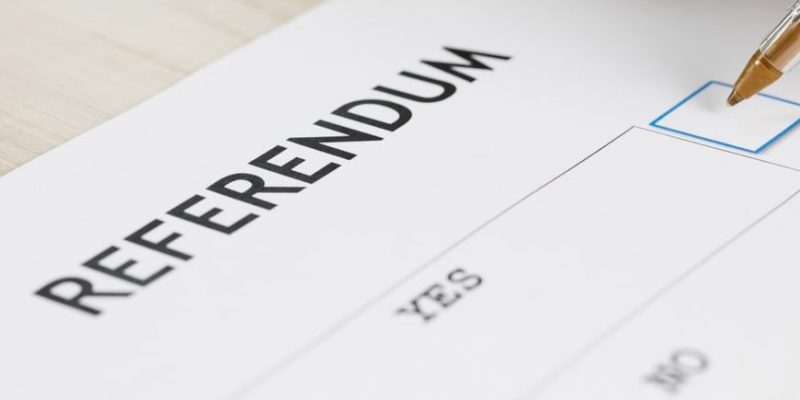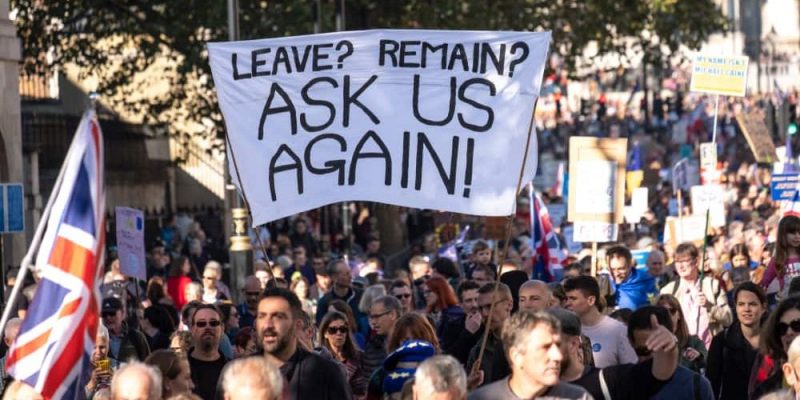We explain what a referendum is, how they are classified and various examples. Also, what are the plebiscite and the popular initiative.

What is a referendum?
A legal mechanism of citizen participation is called a referendum or referendum, through which any law, administrative act or decision is submitted to popular vote taken to be endorsed by the will of the people. It is the typical consultation mechanism of direct and representative forms of democracy.
The name of this mechanism comes from the Latin referendumfrom the verb referrethat is, “to bring back”, since in the political-legal language of Ancient Rome, some matters had to be taken back to the origin of power itself, that is, to the decision of the people, as they were difficult issues. or compromising. These matters were ad referendumthat is, “to be taken back to the town.”
Currently, there are numerous types of referendums, depending on three fundamental perspectives:
According to your object That is, depending on the area concerned, referendums can be of four types:
- Constitutional when they raise an issue linked to the constitution or the legal framework.
- Legal when they raise an issue linked to a specific law.
- Revocations when they raise an issue linked to the end of the mandate of a popular representative.
- Of Independence when they raise an issue linked to the separation of a State from a federation or organization of higher political rank.
According to its foundation that is, what proposes or raises, referendums can be of two types:
- Mandatory when their celebration is part of a regulation or law, so that they are mandatory for fair proceedings.
- Facultative when its celebration is optional, depending on the request made by an organization or the people themselves.
According to your character That is, depending on the type of decision that is asked of the people, referendums can be of four types:
- Proposals when they serve to propose new laws or regulations.
- Derogatives when they serve to eliminate any current law.
- Approvals when they serve to approve laws by popular initiative.
- Consultative when they serve to consult popular opinion regarding a topic, without implying legal obligations of any kind.
See also: Popular consultation
Examples of referendum

Some examples of referendums in history have been the following:
- In Spain in 1986 A referendum was held to consult the people about the nation's membership in the North Atlantic Treaty Organization (NATO). The “Yes” option was endorsed with 56.85% of the votes.
- In Chile in 1988 A National Plebiscite was held to consult the people about the extension of the authoritarian and military government of Augusto Pinochet, who had governed for 15 years, when he led a bloody coup against the government of Salvador Allende. 54.17% of Chileans voted for the “No” option, thus ending the dictatorship.
- In Bolivia in 2009 A constitutional referendum was held, drafted and approved by the Constituent Assembly of Bolivia and partially modified by the Bolivian Congress, proposing a new constitution for the country. The “Yes” option was the winner with 61.43% of the votes.
- In 2016 in the United Kingdom and Gibraltar A referendum was held on the permanence of the United Kingdom in the European Union, popularly known as “Brexit”. Although it was a controversial issue since the 1970s, when the British Commonwealth joined the EU, the vote came as a surprise to the entire world, when 51.9% of voters chose the withdrawal option. .
Referendum and plebiscite
The difference between a referendum and a plebiscite is not clear, and usually depends on the legal framework of each country. In some, the two figures are separated by the type of issues that can be put to a popular vote, or by the type of consequences that emanate from each one. Thus, in some countries we will speak of one or the other to refer to certain types of decisions, political and administrative, or legislative, respectively.
However, the colloquial tendency is to use both words interchangeably. It is even common to speak of a “plebiscite” to refer to any vote, as a synonym for “suffrage.”
popular initiative
In some political systems, popular initiative or citizen initiative is understood as the permitted intervention of the general population in the legislative conduct of a country, that is, a the possibility for organized citizens to propose law initiatives without having to be an official part of the legislative power.
Thus, directly or indirectly the population can participate in the treatment of public affairs, logically fulfilling certain requirements that the law establishes, such as the collection of signatures, for example.
Continue with: Types of democracy
References
- “Referendum” on Wikipedia.
- “Referendum and plebiscite” in Wikilengua.
- “Referendum” in the Language Dictionary of the Royal Spanish Academy.
- “Plebiscite and referendum, are they synonyms?” in Plan Ceibal (Uruguay).
- “What is the difference between a plebiscite and a referendum?” in the National Registry of Civil Status of Colombia.
- “Yes or no? 5 referendums, plebiscites and consultations that have made history in Latin America” on BBC News Mundo.





